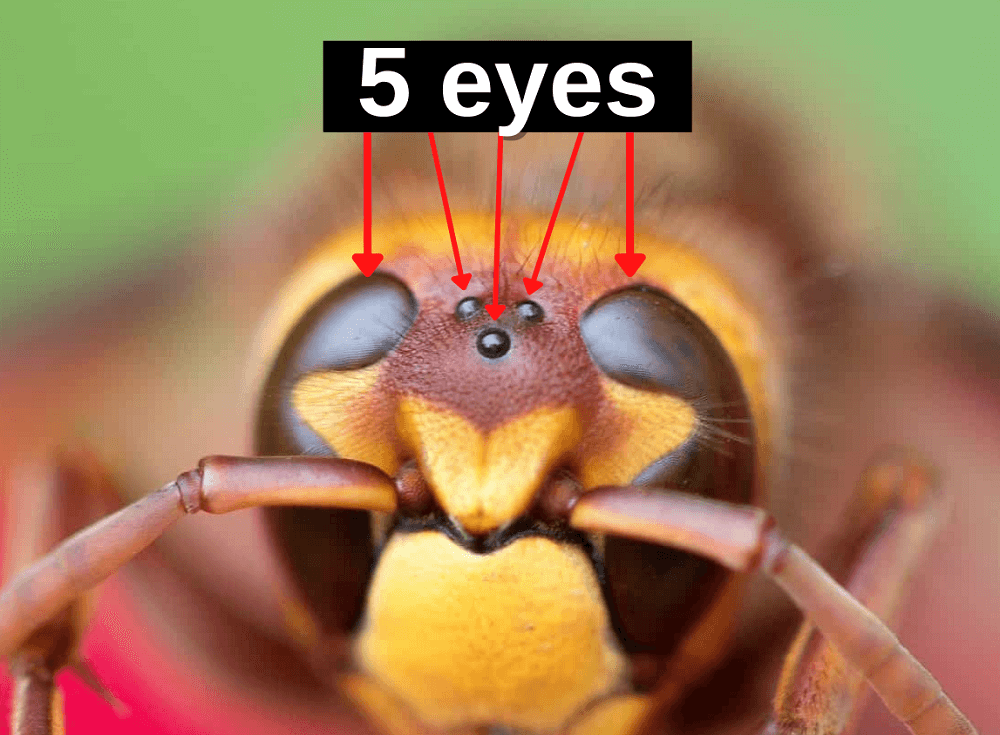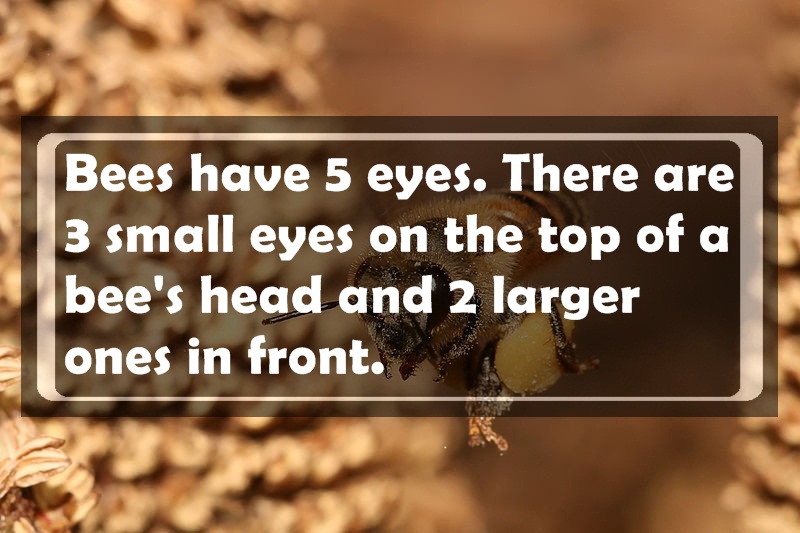Bees have 5 eyes there are 3 small eyes on the top of a bee s head and 2 larger ones in front

Bees Have 5 Eyes: Exploring the Wonders of Bee Vision

Did you know that bees have not one, not two, but a total of five eyes? It’s true! Bees possess an extraordinary visual system that allows them to navigate through their surroundings and find the precious nectar they need to survive. So, let’s take a closer look at these fascinating eyes and the unique role they play in a bee’s life.
The Anatomy of a Bee’s Eyes
The eyes of a bee are divided into two main types: compound eyes and simple eyes. The compound eyes are the larger ones located on the sides of its head, providing a wide field of vision. They are made up of hundreds of tiny hexagonal units, known as ommatidia. These individual units work together to create a mosaic-like image, allowing the bee to perceive motion and patterns in its surroundings.

In addition to the compound eyes, bees also have three smaller simple eyes, known as ocelli, located on the top of their head. These ocelli contain fewer ommatidia compared to the compound eyes, but they serve a vital purpose. They are responsible for detecting changes in light intensity, helping bees orient themselves to the sun’s position. This information is crucial for a bee, as it helps them navigate and maintain a sense of direction during their flights.
How Bees Utilize Their Multiple Eyes
The presence of five eyes provides bees with distinct advantages when it comes to their survival and daily activities. Firstly, the compound eyes allow bees to perceive ultraviolet light, which is invisible to humans. This unique ability helps them locate nectar-rich flowers more easily, as many flowers have special ultraviolet patterns that guide bees to their pollen and nectar sources.
The compound eyes are also highly sensitive to motion, allowing bees to detect movement with exceptional accuracy. This skill is particularly useful when it comes to identifying potential predators or other insects in their environment. By being aware of their surroundings, bees can make informed decisions to protect themselves and their hive.
On the other hand, the ocelli, the three smaller eyes on the top of a bee’s head, have a different function. While they may not offer the same visual acuity as the compound eyes, they are excellent at capturing changes in light intensity. This ability assists bees in navigating and orienting themselves with respect to the sun. By maintaining a steady position relative to the sun’s position, bees can successfully locate their hive, food sources, and communicate with their fellow bees.
The Fascinating World of Bee Vision
Bees are remarkable creatures with a visual system that is optimized for their unique lifestyle. Their five eyes give them an advantage when it comes to foraging, navigation, and overall survival. Their compound eyes detect ultraviolet light and perceive motion, ensuring they can efficiently find the flowers they need to pollinate. Meanwhile, the ocelli allow them to navigate using the sun as a reference point, providing them with an excellent sense of direction.
If you’re curious to learn more about the stunning world of bees and their intricate visual abilities, you can find additional information here. Explore the wonders of nature and discover the marvels of these diligent pollinators with their incredible five eyes!
Related Posts
Quick Links
Legal Stuff

